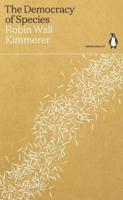Publisher's Synopsis
The significance of storm water runoff in affecting water quality in the United States has become an increasing concern in recent years, as further improvements are made in controlling other point sources such as municipal sewage and industrial waste. EPA conducted a broad analysis of storm water runoff characteristics in its Nationwide Urban Runoff Program between 1979 and 1983. During the 1980's the Agency made several attempts to promulgate regulatory controls for storm water runoff under the statutory framework of the 1972 Clean Water Act. Following enactment of the Water Quality Act of 1987, EPA began development of a more comprehensive regulatory program. During the course of these actions, the use of best management practices (BMPs) in addressing runoff problems was frequently identified, however it was known that additional research on the performance of BMPs was also needed. EPA's Engineering and Analysis Division conducted a study on storm water best management practices during 1997 and 1998 as part of its series of preliminary studies in the effluent guidelines program. This report summarizes existing information and data regarding the effectiveness of BMPs to control and reduce pollutants in urban storm water. The report provides a synopsis of what is currently known about the expected costs and environmental benefits of BMPs, and identifies information gaps as well.








